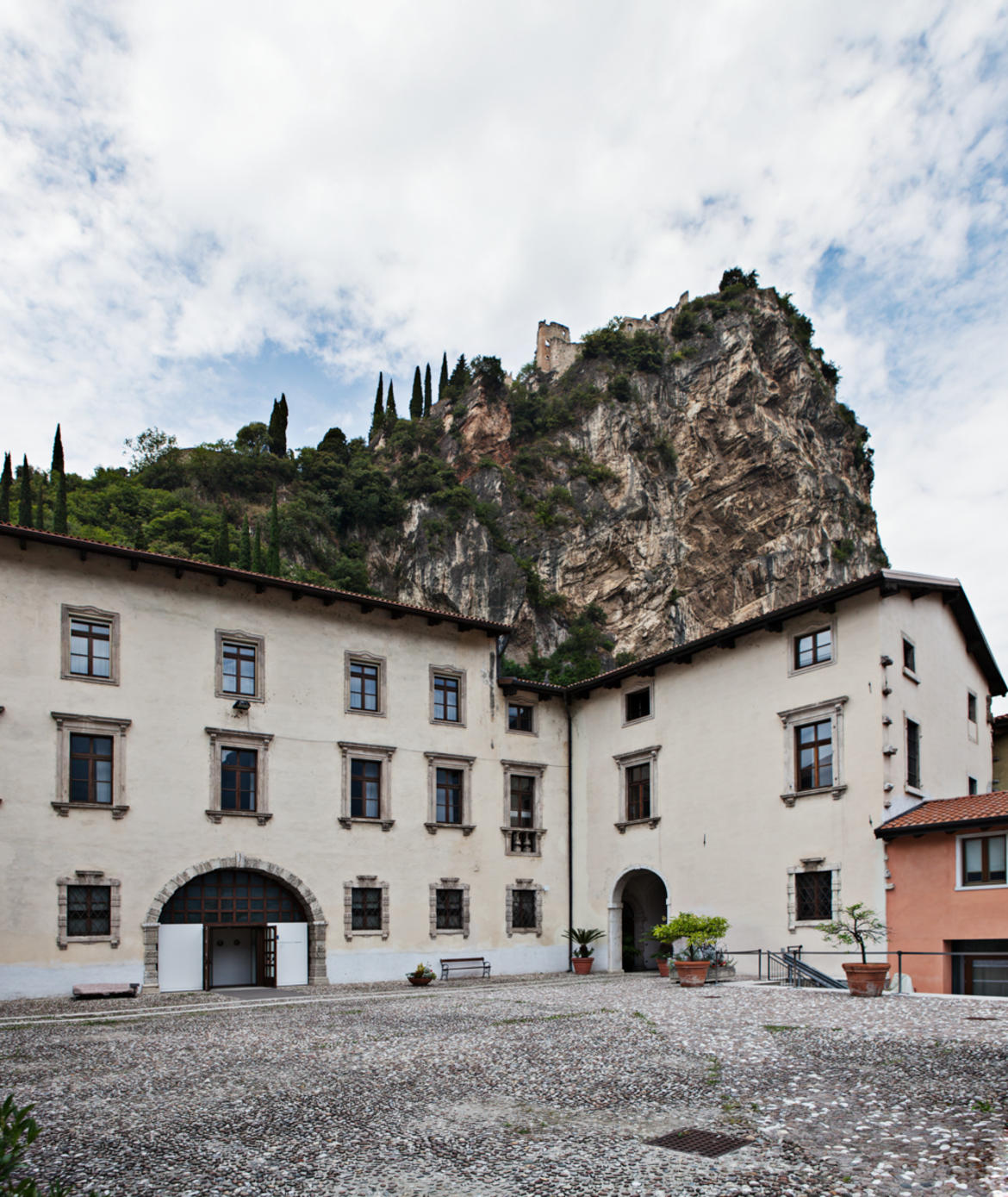Palazzo dei Panni
Lo storico Palazzo dei Panni, edificato alla fine del 1600, era un tempo di proprietà della famiglia dei conti d’Arco

Lo storico Palazzo dei Panni, edificato alla fine del 1600, era un tempo di proprietà della famiglia dei conti d’Arco come si riconosce dallo stemma visibile sul portale di ingresso. Costruito da Giovambattista d’Arco, fu abitato in seguito dal conte Emanuele d’Arco, uomo di cultura e fine musicista.
Alla fine del Settecento nel Palazzo fu collocato un lanificio, da cui il nome Palazzo dei Panni.
Nell’Ottocento fu utilizzato per scopi differenti: dal teatro, alla sede dei pompieri, all’asilo infantile. Acquistato all’inizio del Novecento dall’Istituto della Provvidenza diventò collegio. Durante l’epoca fascista fu trasformato in Palazzo del Littorio.
Utilizzato successivamente come Scuola, dagli anni Novanta, dopo il restauro, ospita l’Assessorato alla Cultura del Comune, la Biblioteca Civica e il Fondo Antico Bruno Emmert e la Galleria Civica G. Segantini.
Notes on the accessibility to the site
The indicated parking space is located in Piazza San Giuseppe, a limited traffic zone (ZTL) where vehicles are allowed to enter only with special permits (i.e. disabled parking card). Passing through an always open 254 cm wide portal, visitors enter an uneven cobbled courtyard with 50 cm wide lanes made of smooth stone. The Palace is the seat of Galleria Civica G. Segantini, the Public Library B. Emmert and the Auditorium of Arco. The indicated entrance door is to the ticket office/bookshop (counter hueght: 111 cm). The lift leads to the Library on the 1st floor and to the Auditorium on the 2nd floor (no lift access to the mezzanine floor). Inside the Library, there is a 135 con long ramp (slope: 4%). The Auditorium has a level seating layout and large aisles; wheelchair spaces are provided in the front rows and the stage can be reached by a 261 cm long ramp (slope: 11%). The wheelchair accessible toilets are on the 1st floor and include: grab bars on both sides of the wc, 9 cm high open-front toilet seat, further vertical grab bars, back flush button, emergency call system, accessible wash basin amd adjustable tilting mirror. The access to the Segantini art galleryis from the courtyard: the exhibition rooms are located part on the ground level and part on a raised level, accessible via a stairlift (dimensions: 80x82 cm; max. payload: 230 kg). From the courtyard, it is also possible to reach both the exhibit hall of Ex Casa Collin/Ex Collin House, by means of a stairlift (dimensions: 72x95 cm; max. payload:190 kg), and the lecture hall, using another stairlift (dimensions: 73x86 cm; max. payload: 150 kg).
Information collected by the staff of the Cooperative Handicrea


